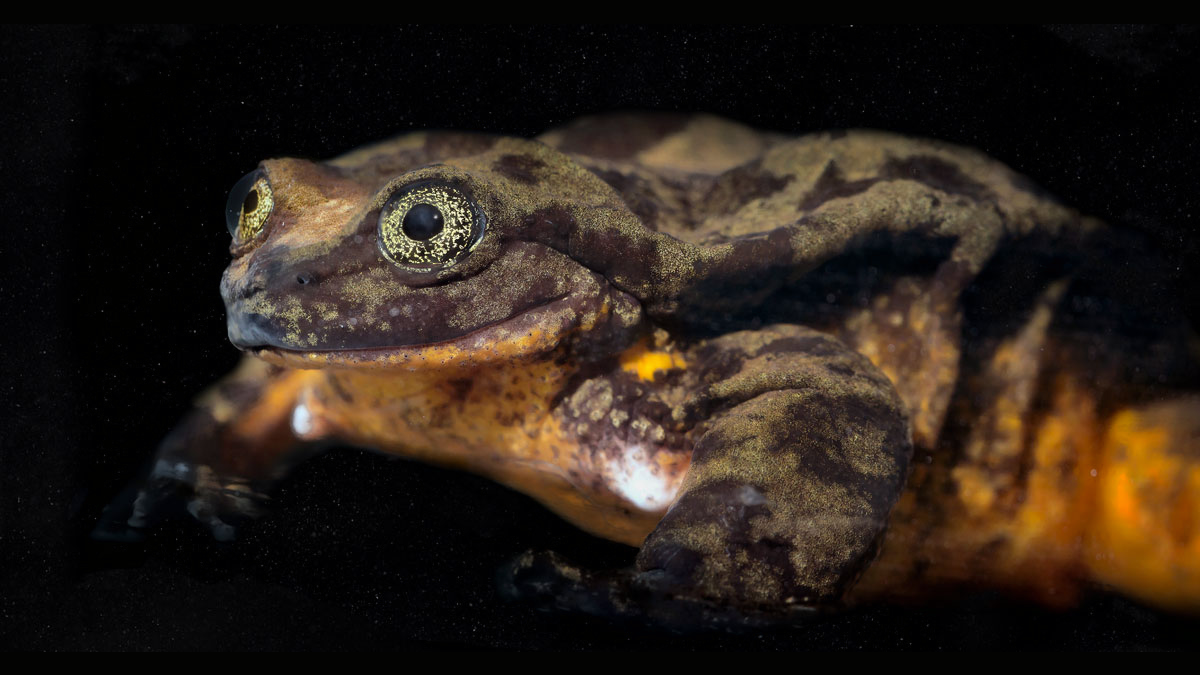
Match.com, a pioneer in the online dating industry, has been setting up couples for nearly 25 years. Last February, they took on their toughest client ever.
Romeo, a Sehuencas frog that has spent nearly his entire life in captivity, is one of the last known of his critically endangered species. He hasn’t met a female since 2008.
Inspired by the amphibian’s story, Match.com and a few conservation organizations set out to help what they considered to be the loneliest frog on earth. They created a dating profile for Romeo, hoping to find his Juliet.
“I’m Romeo,” the summary read. “I’m a Sehuencas water frog and, not to start this off super heavy or anything, but I’m literally the last of my species. I know—intense stuff.”
Romeo’s profile showed that he has an education from the Catholic University of Bolivia, his favorite hangout is underneath rocks and that he’s “definitely” interested in having children.
“As for who I’m looking for, I’m not picky. I just need another Sehuencas like myself. Otherwise, my entire existence as we know it is over (no big deal).”
The pitch worked, and donors raised enough money to help support numerous expeditions for the Bolivian Amphibian Initiative. On each trip, they sought out locations where the species was once common and areas with similar habitat.
Even with the funding, finding Juliet was no sure thing. Sehuencas frogs are private creatures, spending most of their time below the surface of isolated creeks in the Bolivian cloud forest. This region is known for extreme rain, humidity and terrain which make it challenging to locate specimens.
Towards the end of a recent expedition, zoologist Teresa Camacho acknowledged that the team was beginning to lose hope. After days of sloshing through creeks and blindly feeling around with their hands underwater, the reality was starting to set in that Romeo might remain a bachelor.
“We were tired, wet and disappointed,” Camacho said. “Then I said, ‘Let’s do one more creek.’”
In that creek they found a small waterfall that had an orange-bellied water frog beneath it. It was a Sehuencas, but it wasn’t their Juliet. It was a male.
“I noticed the habitat was in good condition, so we had hope,” Camacho said.
The team returned the next day with new confidence. They were able to gather two more males and two females. Among the new crop of frogs was one that researchers have named Juliet, a female that’s the perfect age for reproduction. The other four frogs are too young to be sexually mature.
Matchmaking
Although Romeo has shown physical signs he’s ready to mate, the two won’t get to meet for some time as the frogs wait in quarantine. Juliet and her fellow newcomers are being monitored for chytrid disease, a deadly fungus that has wiped out amphibians worldwide.
Even when a date is arranged, there’s no guarantee that it’ll be love at first sight. No one has ever bred these frogs in captivity, and it’s unknown if the “lethargic” Romeo, who doesn’t swim, will be a match with the “energetic” Juliet that has tried to escape her tank.
Still, researchers are optimistic.
The aquarium where the frogs are being housed has a good track record for breeding Titicaca water frogs, a related endangered species. If sparks don’t fly between Romeo and Juliet, scientists are ready to try in-vitro fertilization or wait for the other four frogs to mature and reproduce.
Captive breeding isn’t perfect, though. Recent studies have pointed out that programs like this one often lack scientific support and can do more harm than good. Agencies have done amazing things with species like the black-footed ferret and California condor, but we also need to consider the failures of species like the Pinta Island giant tortoise and Asiatic lion.
Getting the frogs to breed isn’t the final test, either. With a parent population this small, the species is almost guaranteed to hit a genetic bottleneck that makes the group more susceptible to diseases. If biologists can conquer that, the next step is finding a suitable habitat for the Sehuencas.
These frogs’ population plummeted due to habitat loss, pollution and climate change. With more deforestation and hydroelectric projects in the works, this species and the 15 related frogs that live in the cloud forest have their home under siege.
“Of course, we have a long, challenging road ahead of us,” said Teresa Camacho Badani, chief of herpetology at Museo de Historia Natural Alcide d’Orbigny of Cochabamba. “Romeo’s species is an example of what various species of amphibians are going through in the world.”
Global Wildlife Conservation, one of the key groups in helping kickoff this courtship, is staying positive. They announced that they’ll soon be taking down Romeo’s dating profile since his relationship status has changed. His Twitter account has already made the adjustment, switching his handle to “Romeo the World’s Loneliest Frog (no longer!)”
Feature image via Earth Touch.





Conversation